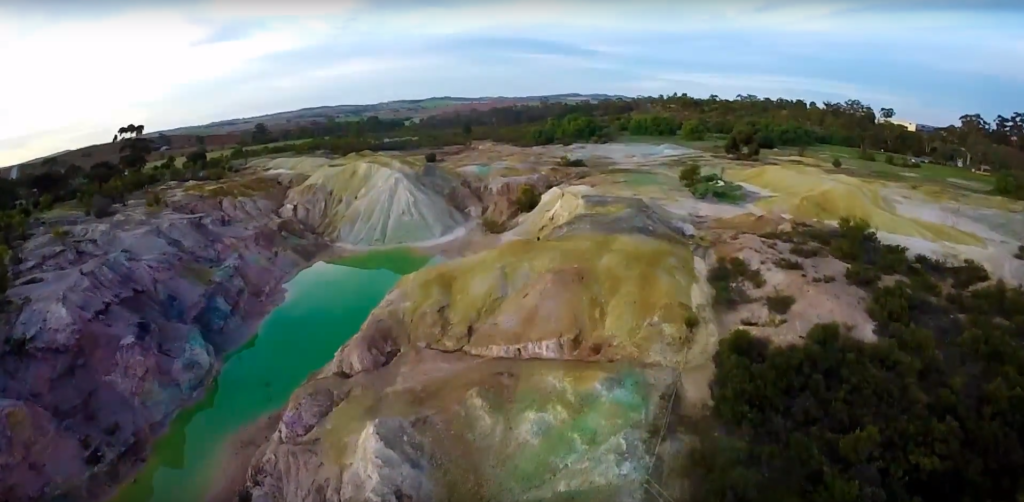Leon Faulkner, Managing Director, Environmental Copper Recovery Pty, reports that Mining3 is working with in-situ recovery (ISR) mining specialists, Environmental Copper Recovery (ECR), on a Commonwealth Government CRC-P (Cooperative Research Centre) grant which will fund a 2.5-year research program to better understand and resolve key ISR mining challenges—particularly in relation to environmental, social, and economic impacts.
“Recent technological improvements and the use of environmentally benign lixiviants are broadening the potential application of ISR mining. The successful development of an ISR process to extract copper and other metals from diverse geological environments will be a step change in Australian mining—but industry and communities want to know more about its value and its impacts, specifically environmentally..
“Mining3 will join other industry and research partners—Thor Mining, Terramin Exploration, University of Adelaide (Institute for Mineral and Energy Resources), and CSIRO (Minerals and Land & Water Divisions)—to participate in the ECR-led research to give industry a tangible demonstration of ISR mining at Kapunda in South Australia with the aim of providing a template for ways to unlock value that currently resides in stranded assets.”
ISR will accelerate the existing naturally leaching copper process visible at Kapunda in the old open-pit pits and dumps. With a low environmental footprint and little permanent infrastructure, ISR could present an economically viable mining solution that addresses the interests of Kapunda and its local community while contributing to the global mining industry’s understanding of the mining method.
ECR’s Leon Faulkner said the Kapunda copper ISR mine could potentially be the first of its kind in Australia and this research grant de-risks the project for the community and investors alike. Having a demonstration site for Copper ISR allows research organisations to validate in a real-world scenario the economic value of ISR to extract copper and other metals within a close community plus addressing core environmental values. ECR hopes the research will broaden views on the deposit types that can be addressed via ISR while at the same time significantly reducing mining’s impact on the environment.
“ISR mining has the potential to minimise or remove several of the community issues associated with mining like dust, noise, a large environmental footprint, competing land use, and other legacy issues while retaining operational profitability. It has the potential to be a low-impact mining option and when used with suitable deposits, may be a game changer for the mining industry.
“The research is focusing on a number of areas including community acceptance of ISR as a mining technique, mineral characterisation, lixiviant system design and optimisation, and accurate fluid flow modelling, all supporting the establishment of environmental risk mitigation strategies. The University of Adelaide’s Institute for Mineral and Energy Resources will apply magnetotellurics to model and track porosity/permeability and apply their fracture network modelling techniques and resource and reserve estimation techniques to predict recoverable tonnes and grade.
“ECR will be closely working with Mining3’s Technology Leader – In-situ Recovery and Processing, Dr Dave Robinson, whom will play a key role in the coordination and supervision of the following research focus areas from CSIRO:
- Orebody characterisation and hydrometallurgical leaching test work with an aim of optimising the lixiviant system and giving estimates of probable recovery and recovery rates
- Environmental monitoring, establishing a pre-ISR baseline focused on— groundwater, and monitoring and reporting environmental performance during project development and ISR operation
- Development of stakeholder communication strategies and social-licence-to-operate.
“ISR is a mining method whereby metals are removed from within the ground in-situ. That is, instead of digging large surface or underground pits, valuable metals from ore deposits are extracted by the underground circulation of a fluid and the recovery of the valuable metal from the fluid at the surface for further processing.
“The ISR method of mineral extraction has the potential to minimise or remove several of the community issues associated with mining like dust, noise, large environmental footprint and competing land use and legacy issues whilst still retaining project profitability.
“ISR has the potential to improve project economics, enable social license, significantly lower the environmental footprint of mining, and help commercialise sub-economic deposits. The methodology is sometimes referred to as ‘mining’s equivalent to keyhole surgery for humans’.”
ECR was formed by a group of mining executives with partners Thor Mining and Terramin Exploration, to investigate the possibility of ISR at Kapunda, South Australia.
Kapunda is a town with a rich mining history, growing from Australia’s first ever commercial copper mine in the 1840s. Even though the mine ceased production in the early 1900s, successive mining companies have looked at recovering the remaining copper over time, but, due to the proximity to town, conventional mining would not be possible. ISR mining is a possible solution to extracting this remaining copper in an environmentally and community sensitive manner.











